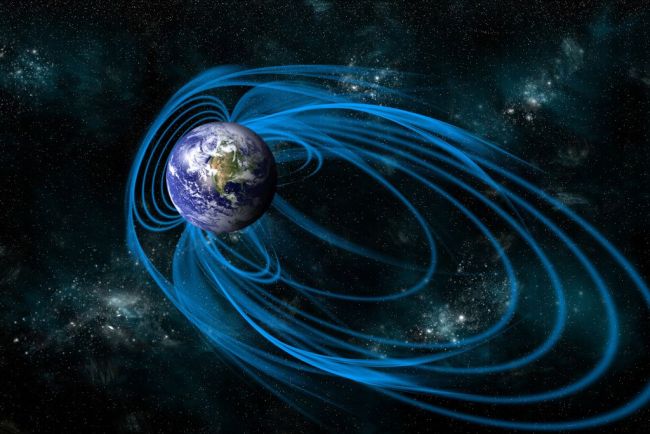A long-standing weak spot in Earth’s magnetic field is getting weirder, and it may be splitting into two distinct zones of weakness.
Source: Live Science
The South Atlantic Anomaly is a section of Earth’s magnetic field between Africa and South America. For decades at least, this region of the magnetic field has gotten weaker and weaker, part of a global trend. According to the European Space Agency (ESA), the global magnetic field has lost 9% of its strength over the past 200 years. The South Atlantic Anomaly seems to be a particular point of change. Now, satellites investigating the anomaly have detected an intensified weakening southwest of Africa, suggesting that the anomaly could split into two separate low points.
This change wouldn’t signal any imminent danger, but it might help reveal what’s going on in the Earth‘s core to drive the changes, according to the ESA. The agency’s satellites are gathering data on the electromagnetic field to answer this question.
Fluctuating field
The magnetic field is why compasses and GPS work, and it protects the planet from charged solar particles that can damage electrical equipment. For that reason, its fluctuations are important. But they are also poorly understood. The Earth’s magnetic field arises from the churn of the planet’s liquid iron core, which acts like an enormous magnet (thus, the North and South poles). But the magnetic field isn’t as neat and tidy as the one created by a typical bar magnet. It has areas of strength and weakness, and sometimes the field even flip-flops, with north and south switching places.
The current weakening of the Earth’s magnetic field could portend another one of these flip-flops, or it could simply be a temporary fluctuation. If the field does reverse, the South Atlantic Anomaly is likely to be the origin of the change, research has found.
The ESA’s Swarm constellation of satellites, launched in 2013, is probing the anomaly for small changes that could explain what’s going on in the core. Since the group of satellites went into orbit, the South Atlantic Anomaly has developed a second center of minimum magnetic intensity, according to the ESA. This second weak spot indicates a complex process in the Earth’s core; a simple dipolar, north-south magnetic field can’t explain the pattern, the agency reported in a press release. CLOSE
Mystery below
“The new, eastern minimum of the South Atlantic Anomaly has appeared over the last decade and in recent years is developing vigorously,” Jürgen Matzka, a geomagnetism researcher at the GFZ German Research Centre for Geosciences, said in a statement. “We are very lucky to have the Swarm satellites in orbit to investigate the development of the South Atlantic Anomaly. The challenge now is to understand the processes in Earth’s core driving these changes.”
The field is weak enough to sometimes affect satellites that pass over the region, according to the ESA. Unprotected from space radiation, the International Space Station and other satellites in low-Earth orbit sometimes experience “single event upsets” in which communications are disrupted or computers go on the fritz. Astronauts sometimes see sudden white flashes from a burst of radiation in front of their eyes.
“This is a well-known area where all different types of satellites — not just a space station with people, but normal communication satellites and others — have problems,” former astronaut Terry Virts told the BBC in 2018. “You want to kind of get through there as fast as you can on the way to the moon, or wherever you’re going.”
Source: Live Science
































Leave a Comment
You must be logged in to post a comment.